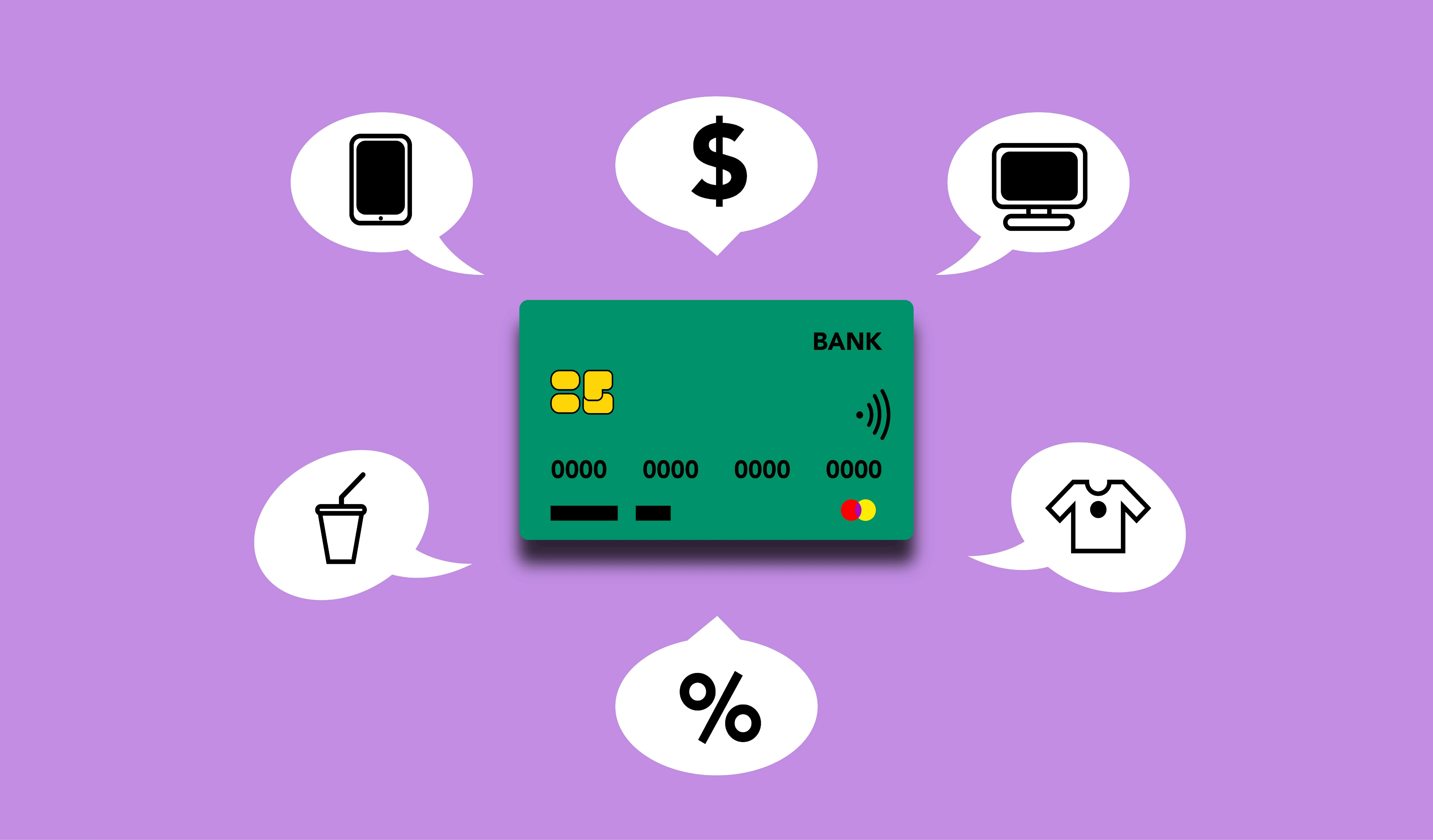Back to all Articles
Karol Andruszków
Karol is a serial entrepreneur who has successfully founded 4 startup companies. With over 11 years of experience in Banking, Financial, IT and eCommerce sector, Karol has provided expert advice to more than 500 companies across 15 countries, including Poland, the USA, the UK, and Portugal.
Embedded Finance vs Banking as a Service Comparison
Updated:
Thu, Apr 17
Reading time: 8 minutes

Embedded Finance (EF) and Banking as a Service (BaaS) represent two transformative approaches in the fintech ecosystem. Each of them provides new value propositions but serves distinct purposes.
Both reshape how financial services are delivered, consumed, and integrated into digital ecosystems. This article breaks down nuances, similarities, and key differences between Embedded finance vs Banking as a service.
Both reshape how financial services are delivered, consumed, and integrated into digital ecosystems. This article breaks down nuances, similarities, and key differences between Embedded finance vs Banking as a service.
Embedded Finance Meaning
Embedded Finance means the integration of financial services into non-financial platforms and ecosystems. It allows e-commerce platforms, ride-hailing apps, or SaaS providers to offer financial products seamlessly within their digital environments. For example payments, lending, insurance, or investments.
Remember when an e-commerce platform offered you a “Buy Now, Pay Later” option at checkout?
This is an example of Embedded Finance in action. Instead of requiring users to engage with separate financial institutions, this approach directly brings banking-like services into the digital environments people use daily.
The goal is simple: cut barriers, reduce steps, and deliver financial services at the exact moment they’re needed.
This is an example of Embedded Finance in action. Instead of requiring users to engage with separate financial institutions, this approach directly brings banking-like services into the digital environments people use daily.
The goal is simple: cut barriers, reduce steps, and deliver financial services at the exact moment they’re needed.
Key Aspects of Embedded Finance
Customer-Centricity
Embedded Finance is customer-centric at its core. Traditionally financial services require users to switch between platforms or deal with complex processes. Embedded Finance operates where the customer already is.
This is all about convenience. Imagine you’re buying a laptop online, and instead of hunting for external financing, the store offers you a payment plan option during checkout. That’s Embedded Finance making life easier.
This approach prioritizes removing friction. No more filling out lengthy forms or waiting days for approvals. Everything happens in real-time. EF serves to meet customers’ needs in the most intuitive way possible.
This is all about convenience. Imagine you’re buying a laptop online, and instead of hunting for external financing, the store offers you a payment plan option during checkout. That’s Embedded Finance making life easier.
This approach prioritizes removing friction. No more filling out lengthy forms or waiting days for approvals. Everything happens in real-time. EF serves to meet customers’ needs in the most intuitive way possible.
The Technology Behind the Embedded Finance
At the heart is the use of Application Programming Interfaces (APIs). APIs act as the bridges connecting non-financial platforms with financial service providers. This allows for secure, fast, and scalable deployment of various services.
Microservices architecture plays a critical role here, as it enables modularity. For example, instead of building a payment system from scratch, a business integrates a ready-to-use payment module into its existing infrastructure.
Read the top 9 embedded finance examples to explore real-world use cases.
Microservices architecture plays a critical role here, as it enables modularity. For example, instead of building a payment system from scratch, a business integrates a ready-to-use payment module into its existing infrastructure.
Read the top 9 embedded finance examples to explore real-world use cases.
Benefits of Embedded Finance
E-commerce platforms can integrate financial services such as Buy Now, Pay Later (BNPL), in-app payments, or product insurance directly into the checkout process.
This improves the customer experience by making transactions faster and more convenient. As practice shows it reduces cart abandonment rates. Additionally, e-commerce providers can generate extra revenue through fees or commissions from embedded services.
For Banks, it provides new ways to distribute their services by partnering with non-financial platforms. EF expands customer reach and integrates services like loans, credit, or payment solutions directly into everyday platforms.
These partnerships help financial institutions get new customers, enhance service delivery, and diversify revenue streams.
This improves the customer experience by making transactions faster and more convenient. As practice shows it reduces cart abandonment rates. Additionally, e-commerce providers can generate extra revenue through fees or commissions from embedded services.
For Banks, it provides new ways to distribute their services by partnering with non-financial platforms. EF expands customer reach and integrates services like loans, credit, or payment solutions directly into everyday platforms.
These partnerships help financial institutions get new customers, enhance service delivery, and diversify revenue streams.
What is Banking as a Service (BaaS)?
Banking as a Service, or BaaS, is a model where licensed banks and financial institutions provide their core banking infrastructure and services to other businesses through APIs. This way third-party companies offer their financial products without becoming licensed banks.
BaaS acts as the foundation that enables financial solutions by providing access to core banking capabilities. For example account management, payment processing, card issuance, and regulatory compliance.
Think of BaaS as a plug-and-play solution for banking. Instead of spending years building a banking system from scratch, businesses can use the infrastructure of a licensed provider to speed up TTM (time-to-market) of financial solutions.
In our previous article “Banking as a Service (BaaS) Explained”, we provided a comprehensive breakdown of this topic.
BaaS acts as the foundation that enables financial solutions by providing access to core banking capabilities. For example account management, payment processing, card issuance, and regulatory compliance.
Think of BaaS as a plug-and-play solution for banking. Instead of spending years building a banking system from scratch, businesses can use the infrastructure of a licensed provider to speed up TTM (time-to-market) of financial solutions.
In our previous article “Banking as a Service (BaaS) Explained”, we provided a comprehensive breakdown of this topic.
Key Aspects of Banking as a Service
Infrastructure in the core
BaaS serves as an infrastructure enabler. It handles all complex processes like account creation, payments, KYC/AML compliance, and even card issuance. This infrastructure is particularly beneficial for fintechs and startups. It reduces high costs, long development cycles and allows for focus on innovations.
For instance, a fintech app might use a BaaS provider to offer savings accounts and debit cards to its users. The app itself focuses on user experience, while the BaaS provider handles the backend processes, regulatory requirements, and banking operations.
For instance, a fintech app might use a BaaS provider to offer savings accounts and debit cards to its users. The app itself focuses on user experience, while the BaaS provider handles the backend processes, regulatory requirements, and banking operations.
The Role of Technology in BaaS
The BaaS ecosystem is built on advanced technology stacks designed for scalability and flexibility. At the center are robust APIs. This enables seamless communication between the licensed banking infrastructure and third-party platforms. APIs allow to embedding banking services directly into apps or websites without disrupting the user experience.
BaaS platforms often use cloud-native environments. It allow them to scale operations cost-effectively and handle large transaction volumes.
Additionally, they include orchestration layers for tasks like compliance checks, regulatory reporting, and anti-money laundering (AML) monitoring.
BaaS platforms often use cloud-native environments. It allow them to scale operations cost-effectively and handle large transaction volumes.
Additionally, they include orchestration layers for tasks like compliance checks, regulatory reporting, and anti-money laundering (AML) monitoring.
Benefits of Banking as a Service
BaaS simplifies access to banking services. Businesses no longer need to invest in obtaining a banking license or building a banking infrastructure from scratch.
Instead, they can focus on innovation and user experience while leaving the tech complexities to the BaaS provider. This approach accelerates time-to-market for financial products, reduces operational costs, and makes it easier to scale offerings.
Instead, they can focus on innovation and user experience while leaving the tech complexities to the BaaS provider. This approach accelerates time-to-market for financial products, reduces operational costs, and makes it easier to scale offerings.
Comparing Embedded Finance and Banking as a Service: A Technology Perspective
Architectural Complexity
From an architectural perspective, Embedded Finance is generally simpler to deploy. Non-financial businesses looking to add finance-related features can rely on front-end API integrations with existing financial service providers. This approach minimizes development complexity.
On the other hand, Banking as a Service demands a more complex setup. Businesses must orchestrate many microservices ( e.i. core banking, compliance, payments, and customer data management).
This deeper integration allows for better customization and ownership of the financial product. But requires deep technical expertise and investment in backend development.
On the other hand, Banking as a Service demands a more complex setup. Businesses must orchestrate many microservices ( e.i. core banking, compliance, payments, and customer data management).
This deeper integration allows for better customization and ownership of the financial product. But requires deep technical expertise and investment in backend development.
Scalability Challenges
Both Embedded Finance and BaaS based on cloud-native architectures, but the scope of scaling differs. Embedded Finance, being a lighter solution, scales faster and easier. Growth will depend on API performance and the scalability of the financial service provider's infrastructure.
In contrast, BaaS platforms face a more challenging scalability scenario. Provider must ensure its infrastructure can handle diverse demands, including large transaction volumes, dynamic customer bases, and new product rollouts.
This requires robust system design and capacity planning to support exponential growth across various clients.
In contrast, BaaS platforms face a more challenging scalability scenario. Provider must ensure its infrastructure can handle diverse demands, including large transaction volumes, dynamic customer bases, and new product rollouts.
This requires robust system design and capacity planning to support exponential growth across various clients.
Comparing the Implementation of Embedded Finance and Banking-as-a-Service
While Embedded Finance emphasizes front-end design and user experience, BaaS requires deep back-end development and compliance expertise. Here's a breakdown of what implementing each model entails.
Implementation Aspect
Embedded Finance focuses on creating a seamless user experience. The goal is to integrate financial services in a way that feels natural and intuitive to the end user. This requires significant attention to detail in front-end development and user interface design.
Financial interactions, such as checkout payments or credit options, must created carefully to avoid disrupting the customer journey. For instance, embedding a "Buy Now, Pay Later" feature in an e-commerce platform requires coordination between design, APIs, and user workflows.
The complexity lies in making the financial service feel like an organic part of the platform rather than an added layer.
BaaS involves a much higher degree of backend complexity. Businesses leveraging BaaS are building financial products on top of a bank’s core infrastructure. This demands advanced backend system integration and API management.
For example, creating a fintech app using BaaS requires connecting with APIs for account creation, payment processing, and compliance checks while ensuring seamless data flows.
Financial interactions, such as checkout payments or credit options, must created carefully to avoid disrupting the customer journey. For instance, embedding a "Buy Now, Pay Later" feature in an e-commerce platform requires coordination between design, APIs, and user workflows.
The complexity lies in making the financial service feel like an organic part of the platform rather than an added layer.
BaaS involves a much higher degree of backend complexity. Businesses leveraging BaaS are building financial products on top of a bank’s core infrastructure. This demands advanced backend system integration and API management.
For example, creating a fintech app using BaaS requires connecting with APIs for account creation, payment processing, and compliance checks while ensuring seamless data flows.
Technical Skills Required for Implementation
To implement Embedded Finance, businesses need advanced front-end development capabilities. Teams must be skilled in crafting user interfaces that integrate financial features smoothly, ensuring that they align with the overall platform design.
Additionally, expertise in financial interaction modeling is crucial to create features like payment gateways, loan calculators, or insurance offers that work seamlessly within the user journey.
Implementing BaaS requires technical teams with strong backend development expertise. API development is important to ensuring financial services work well with other systems. Teams also need an understanding of regulatory compliance to ensure that the financial products align with legal standards and requirements.
Expertise in backend system integration is necessary to ensure that the core banking infrastructure interacts well with external applications.
Additionally, expertise in financial interaction modeling is crucial to create features like payment gateways, loan calculators, or insurance offers that work seamlessly within the user journey.
Implementing BaaS requires technical teams with strong backend development expertise. API development is important to ensuring financial services work well with other systems. Teams also need an understanding of regulatory compliance to ensure that the financial products align with legal standards and requirements.
Expertise in backend system integration is necessary to ensure that the core banking infrastructure interacts well with external applications.
Integration Effort: Front-End vs. Backend
The integration efforts for Embedded Finance and BaaS also differ. Embedded Finance demands a significant investment in front-end integration to align financial services with the platform’s design and user workflows.
BaaS requires substantial backend integration to connect APIs with the core banking infrastructure. This involves setting up secure communication channels, managing data flow, and ensuring the system can handle high transaction volumes.
BaaS requires substantial backend integration to connect APIs with the core banking infrastructure. This involves setting up secure communication channels, managing data flow, and ensuring the system can handle high transaction volumes.
💡 Need help with your implementation roadmap?
Our experts can guide you through the process!
Our experts can guide you through the process!
Conclusion
The future of Embedded Finance and Banking as a Service seems quite exciting. Embedded Finance will expand into industries like healthcare, education, and logistics, making financial services an essential part of everyday platforms.
Banking as a Service will continue to innovate on the backend. Blockchain technology will improve transparency, security, and efficiency in financial products. Both Embedded Finance and BaaS are making waves in the financial sector. Together, they’re creating a future where financial services are easier to access, more efficient, and deeply integrated into everyday life.
Banking as a Service will continue to innovate on the backend. Blockchain technology will improve transparency, security, and efficiency in financial products. Both Embedded Finance and BaaS are making waves in the financial sector. Together, they’re creating a future where financial services are easier to access, more efficient, and deeply integrated into everyday life.
Karol Andruszków
Karol is a serial entrepreneur who has successfully founded 4 startup companies. With over 11 years of experience in Banking, Financial, IT and eCommerce sector, Karol has provided expert advice to more than 500 companies across 15 countries, including Poland, the USA, the UK, and Portugal.
Table of Contents:
Embedded finance meaning
Key aspects of embedded finance
What is Banking as a Service (BaaS)?
Key aspects of banking as a service
Comparing embedded finance and banking as a service: a technology perspective
Comparing the implementation of embedded finance and banking-as-a-service
Get started today
Recommended Articles
Tue, Nov 25
How to Choose the Best Marketplace Software?
Learn how to choose the best marketplace software with a clear, step-by-step guide. Compare models, features, scale, cost, and vendor fit to make a confident choice.
Thu, Nov 20
Top 15 UX Tips to Improve Conversion Rates in Travel Booking
Improve travel booking flow conversion with 15 proven UX tips. Learn how mobile design, pricing clarity, speed, and smart flows reduce friction and lift bookings.
Mon, Nov 17
What to Look for in Enterprise Booking Software?
Learn what to look for in enterprise booking software: key features, integrations, security, and data to guide your 2025 selection.


